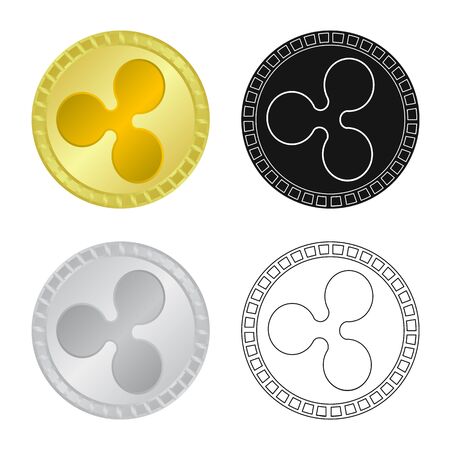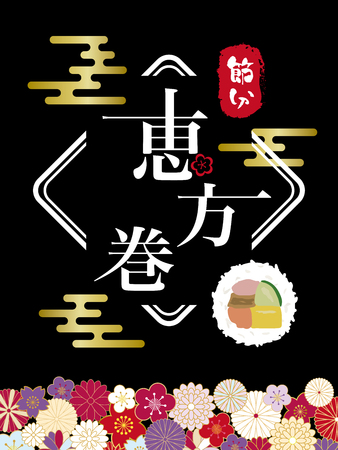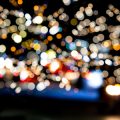1. Understanding Feng Shui Basics in a Modern American Context
Feng Shui, an ancient Chinese practice, focuses on harmonizing people with their environment through thoughtful arrangement and design. In today’s America, this age-old wisdom finds new relevance as homeowners and designers look for ways to create balanced, inviting spaces that reflect both personal style and wellness trends. As LED lighting becomes increasingly popular across the United States, it offers exciting opportunities to blend Feng Shui principles with modern living.
The Essentials of Feng Shui
At its core, Feng Shui is about managing the flow of energy—called Chi—to promote health, happiness, and prosperity. This is achieved by balancing five natural elements (wood, fire, earth, metal, water) and using the Bagua map—a tool that divides a space into nine life areas such as wealth, career, and family. Color, light, and furniture placement all play key roles in shaping the energy within a home or office.
Why Americans Are Embracing Feng Shui
Many Americans are drawn to Feng Shui because it aligns with modern goals: maximizing comfort, productivity, and well-being while expressing individuality. Open floor plans, minimalism, and eco-friendly materials—hallmarks of contemporary American design—can seamlessly integrate Feng Shui ideas when thoughtfully paired with smart technology like LED lighting.
Modern Design Meets Feng Shui Principles
| Feng Shui Principle | Modern American Application | LED Lighting Example |
|---|---|---|
| Balance of Elements | Mixing natural woods with metals and glass for visual harmony | LED bulbs with adjustable color temperature to mimic sunlight (fire element) |
| Good Energy Flow (Chi) | Open layouts & clear pathways; clutter-free surfaces | Strategic placement of LED accent lights to guide movement |
| Personalization (Bagua Map) | Zoning areas for work, relaxation, or creativity at home | LED strips highlighting specific Bagua zones (like prosperity corner) |
| Sustainability & Wellness | Preference for energy-efficient solutions & healthy homes | Eco-friendly LED fixtures supporting both wellness and sustainability goals |
The Role of Light in Modern Feng Shui Cures
Lighting has always played a crucial part in Feng Shui cures. In the past, sunlight and candles were the primary sources. Today’s advanced LED options allow Americans to fine-tune their environments like never before—from brightening dark corners to setting the mood for relaxation or productivity. By understanding basic Feng Shui concepts and combining them with innovative lighting solutions, anyone can create a space that feels harmonious and uniquely theirs.
Evolution of Lighting in Feng Shui Practice
Lighting has always played a crucial role in Feng Shui, shaping the way energy, or “chi,” flows through a space. Traditionally, natural light and simple sources like candles and oil lamps were used to illuminate homes and influence mood and energy balance. Over time, as technology evolved, so did the tools available for Feng Shui practitioners. Today, LED lighting is at the forefront, offering new possibilities for modern homes in America.
Traditional Lighting in Feng Shui
In the past, ancient Feng Shui relied heavily on the sun’s natural light during the day and fire-based lighting at night. Candles and oil lamps were more than just sources of illumination—they symbolized warmth, life, and movement of positive energy. The placement of these lights was carefully considered to enhance harmony and address imbalances in different areas of a home.
Key Differences Between Traditional and Modern Lighting
| Aspect | Traditional Lighting (Candles/Oil Lamps) | Modern Lighting (LEDs) |
|---|---|---|
| Energy Source | Fire/Natural Light | Electricity |
| Control & Flexibility | Limited control over brightness and color | Adjustable brightness and a wide range of colors |
| Safety | Risk of fire hazards | Safe, cool to touch, low risk |
| Lifespan & Cost | Short lifespan; recurring cost for fuel | Long-lasting; energy efficient; cost-saving over time |
| Cultural Symbolism | Represents tradition and ritual | Embraces innovation while supporting traditional goals |
The Shift to LED Lighting in Modern Homes
The transition from traditional lighting to LEDs represents more than just technological progress—it brings greater flexibility and creativity into Feng Shui practice. In American homes, LEDs allow homeowners to customize their environments easily. You can adjust the color temperature to match different moods or times of day, mimic daylight for vitality, or use softer tones for relaxation.
Main Benefits of Using LEDs in Feng Shui Today:
- Adaptability: Easily change color and intensity to support various Feng Shui cures.
- Sustainability: Lower energy consumption means a greener lifestyle—another aspect of harmonious living.
- Aesthetics: Sleek designs integrate well with modern American décor while still honoring Feng Shui principles.
- User-Friendly: Smart controls make it simple to create the right atmosphere for each part of your home.
This evolution shows how combining ancient wisdom with today’s technology can help you create spaces filled with positive energy that fit your lifestyle.

3. Benefits of LED Lighting for Feng Shui Energy
How LED Lighting Enhances Chi Flow
In Feng Shui, “chi” means the life force or energy that moves through a space. Good lighting is essential for keeping chi vibrant and active in your home or office. LED lighting offers flexibility and control, making it easier to keep energy flowing smoothly. Because LEDs can be adjusted in brightness and color, you can customize them to avoid dark corners where stagnant chi might collect. Well-lit spaces help create an uplifting atmosphere that encourages positive vibes, supports productivity, and makes everyone feel more welcome.
Color Balance and Feng Shui Theory
Feng Shui places a big emphasis on color because each color connects with one of the five elements: Wood, Fire, Earth, Metal, and Water. LED lights come in a wide range of colors, so you can easily choose hues that support specific areas of your life according to the Bagua map (a Feng Shui tool used to divide spaces). For example, warm white or red-toned LEDs bring Fire energy—great for motivation and passion—while cool blue LEDs encourage calmness and relaxation.
| Feng Shui Element | Recommended LED Color | Best Area of the Home |
|---|---|---|
| Wood | Green | Living Room, Entryway |
| Fire | Red, Warm White | Office, Kitchen |
| Earth | Yellow, Beige | Dining Room, Bedroom |
| Metal | White, Silver | Home Office, Children’s Room |
| Water | Blue, Black | Bathroom, Meditation Space |
Mood Enhancement and Wellness Trends in America
The right lighting has a big impact on mood—a concept that matches both ancient Feng Shui wisdom and modern American wellness trends. Many people in the U.S. now use lighting as part of their self-care routines to boost focus during work hours or unwind in the evening. LED lights are popular because they’re energy-efficient, long-lasting, and highly adjustable. Whether you want to energize your morning or create a peaceful setting before bed, smart LED bulbs make it easy to match your light environment to your emotional needs.
Quick Tips for Using LEDs in Feng Shui Cures:
- Add dimmable LEDs: Adjust brightness throughout the day to support natural circadian rhythms.
- Use color-changing bulbs: Shift colors depending on activity—blue for meditation, warm white for dinner gatherings.
- Avoid harsh overhead lights: Instead, use layered lighting like floor lamps and wall sconces for a softer feel.
- Highlight important spaces: Use focused lighting for entryways or workspace corners to invite vibrant chi.
With these simple adjustments using LED lighting, you can easily blend ancient Feng Shui principles with today’s lifestyle needs—creating spaces that feel balanced, energetic, and uniquely yours.
4. Practical Tips: Integrating LED Lighting into Your Space
Choosing the Right LED Lights for Feng Shui
When it comes to modern Feng Shui in American homes and workplaces, selecting the right LED lights is essential. Here are some practical tips to help you make the best choices:
| Feng Shui Element | Recommended LED Color | Best Location | Purpose/Effect |
|---|---|---|---|
| Fire (Energy, Passion) | Warm White, Soft Yellow, Red Accents | Living Room, Dining Area | Boosts social energy and enthusiasm |
| Water (Calm, Flow) | Cool Blue, Soft White | Bathroom, Meditation Room | Promotes relaxation and peace |
| Earth (Stability, Nourishment) | Soft Brown, Amber, Warm White | Bedroom, Study Room | Creates grounding and a sense of security |
| Wood (Growth, Vitality) | Green Tones, Natural Daylight LEDs | Office, Home Library | Encourages creativity and productivity |
| Metal (Clarity, Precision) | Crisp White, Metallic Hues | Home Office, Kitchen | Aids focus and organization |
The Best Ways to Position LED Lighting for Optimal Feng Shui Impact
Create Balance with Layered Lighting
Avoid relying on a single overhead light source. Instead, layer your lighting by combining ceiling lights, floor lamps, desk lamps, and wall sconces. This approach ensures that energy flows evenly throughout the room.
Avoid Harsh Shadows and Glare
Place LEDs so they don’t cast harsh shadows or create glare on workspaces or seating areas. Use dimmable LEDs where possible to adjust the brightness according to the time of day and activity.
Mood Matters: Adjust Color Temperature by Room Function
Select warmer tones (2700K-3000K) for bedrooms and relaxation spaces to promote restfulness. Use cooler tones (3500K-5000K) in kitchens or home offices for clarity and alertness.
Troubleshooting Common U.S. Lighting Challenges in Feng Shui Settings:
| Challenge | LED Solution/Tips |
|---|---|
| Poor Natural Light in Apartments/Offices | Add daylight-mimicking LEDs near windows or corners to attract positive Qi and brighten dark spots. |
| Bland or Sterile Atmosphere from Standard Fixtures | Add color-changing smart bulbs or accent strips to bring warmth and personality while enhancing energy flow. |
| Lack of Outlets or Wiring Options | Use battery-powered LED puck lights or plug-in strip lights for flexibility without major renovations. |
| Sensitive Sleepers Disturbed by Nighttime Light Pollution | Select LEDs with adjustable brightness settings or motion sensors to minimize disruption while maintaining safety. |
Quick Tips for Everyday Use:
- Avoid placing strong LED lights directly above beds or seating—this can create unwanted pressure according to Feng Shui principles.
- If a room feels “off,” try switching bulb colors or moving an LED lamp to a new spot and notice how the energy shifts.
- Sustainability matters: Look for ENERGY STAR-certified LEDs for both eco-friendliness and positive Feng Shui symbolism (representing renewal and harmony).
By thoughtfully choosing and positioning LED lighting in your American home or workplace, you can enhance both style and good energy flow—making your space feel brighter, balanced, and more inviting every day.
5. Common Mistakes and Best Practices with LED Lighting in Feng Shui
Frequent Pitfalls When Using LED Lights for Feng Shui
Integrating LED lighting into your home or office for Feng Shui benefits can be a game-changer, but there are some common mistakes many Americans make. Understanding these pitfalls will help you avoid disruptions in your environment’s harmony.
| Mistake | Why It Matters in Feng Shui |
|---|---|
| Using harsh, overly bright LEDs | Strong glare or intense white light can create stress and disrupt energy flow (Qi). |
| Choosing the wrong color temperature | Cool blue-toned lights can feel unwelcoming in family spaces; warm tones are generally better for relaxation. |
| Poor placement of lights | Improperly placed LEDs may cause unwanted shadows, cutting off positive energy in key zones. |
| Ignoring the Five Elements balance | LEDs should enhance Wood, Fire, Earth, Metal, or Water elements depending on the area’s Bagua map. |
| Overusing colored LEDs without purpose | Random use of colored bulbs can create energetic confusion instead of targeted cures. |
Best Practices for Harmonizing Your Space with LED Lighting
If you want to use LEDs as effective Feng Shui cures in your American home or workplace, try these top recommendations:
- Select adjustable LEDs: Dimmable bulbs let you adapt brightness to suit different times of day and moods, supporting better energy flow.
- Match color temperature to room function: Use warm white (2700K-3000K) in living areas and bedrooms for a cozy vibe; choose cooler whites (3500K-4000K) for kitchens and workspaces to boost focus.
- Position lights thoughtfully: Place LEDs to softly illuminate dark corners, entryways, or hallways—these spots often trap stagnant energy. Avoid shining lights directly at doors or beds.
- Balance with other elements: Pair your lighting choices with colors and materials that support the Five Elements. For example, green-tinted LEDs energize Wood areas (like East or Southeast), while red accents highlight Fire zones (South).
- Use colored LED bulbs purposefully: Add blue LEDs in the North for career growth or pink in Southwest corners for relationships—always align colors with specific Feng Shui goals.
- Avoid cluttered wiring: Exposed cords and tangled wires block Qi; use cord organizers to keep things tidy.
Quick Reference: LED Lighting Do’s & Don’ts in Feng Shui
| Do’s | Don’ts |
|---|---|
| Dimmable, warm-white bulbs in social spaces | Bluish-white light in bedrooms or relaxation zones |
| Purposeful placement based on Bagua map | Randomly adding colored LEDs everywhere |
| Tidy up cords and fixtures for smooth Qi flow | Letting wires clutter surfaces or corners |
| Select colors that support your intentions (career, love, health) | Using trendy colors that clash with your Feng Shui needs |
Your Next Step: Mindful Illumination for Balanced Energy
The right LED lighting doesn’t just brighten up a space—it helps create an environment where positive energy flows freely. With careful choices and mindful placement, you’ll turn modern technology into a powerful tool for harmonious living according to Feng Shui principles.


